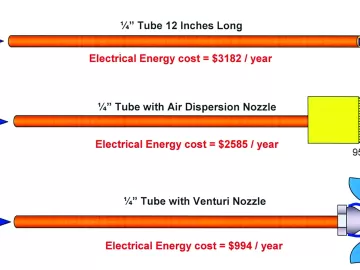Compressed Air Supply at a Metal Machining Plant
This metal fabrication and machining facility produces high-quality precision-built products. Over the years, the plant has grown and there have been several expansions to the current location. The company currently spends \$227,043 annually on energy to operate the compressed air system. This figure will increase as electric rates are raised from their current average of 9.8 cents per kWh.












